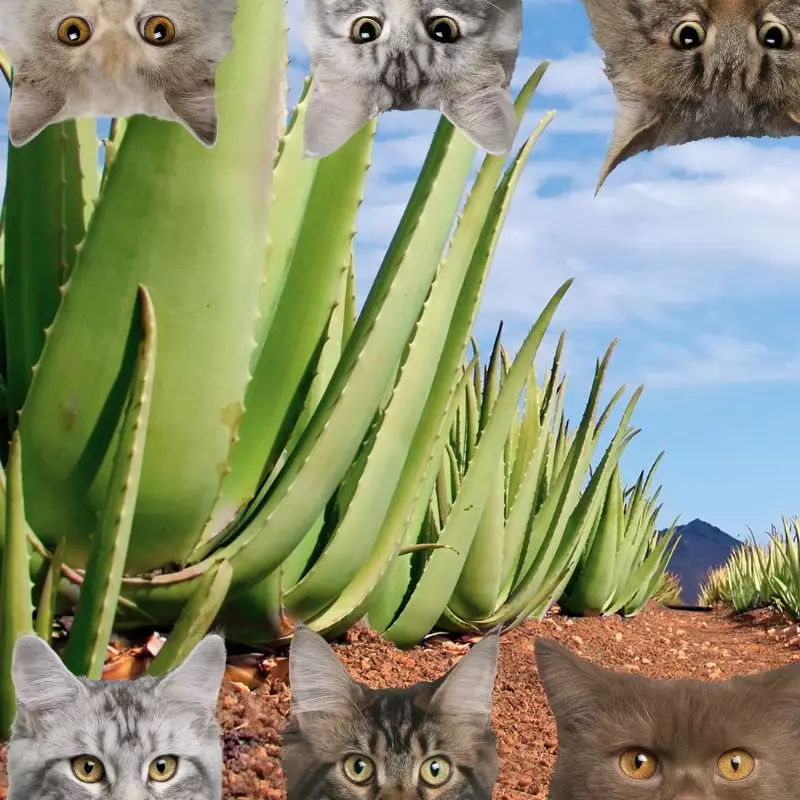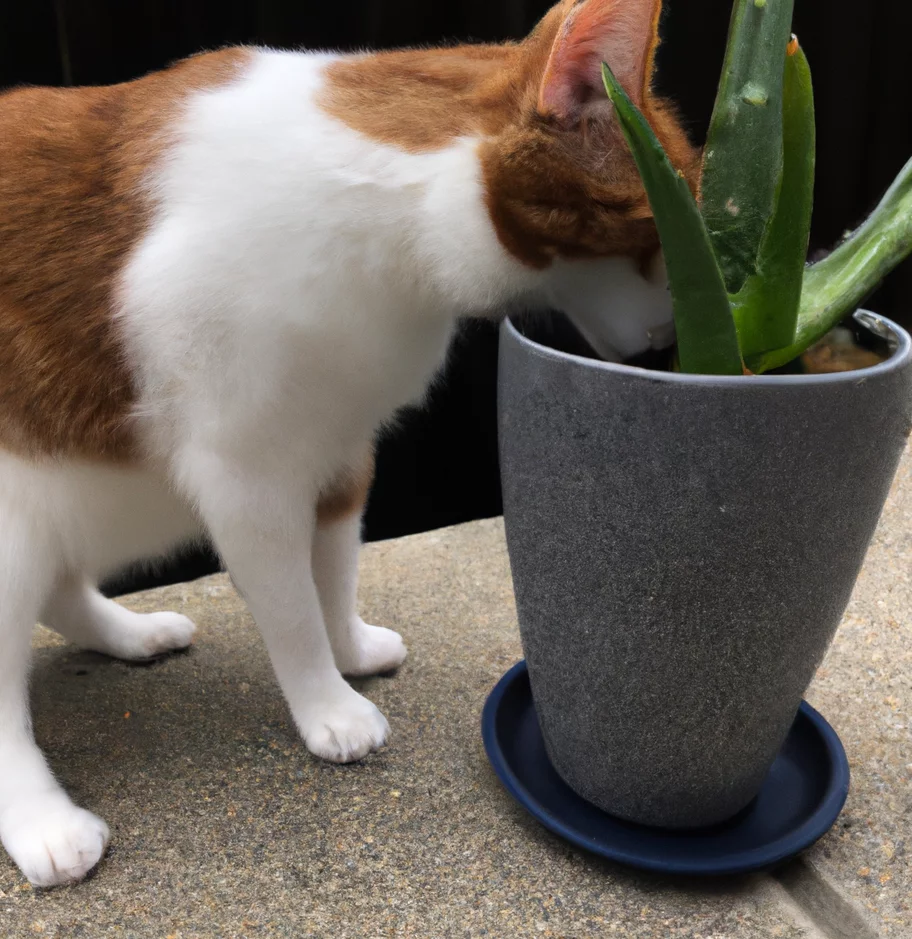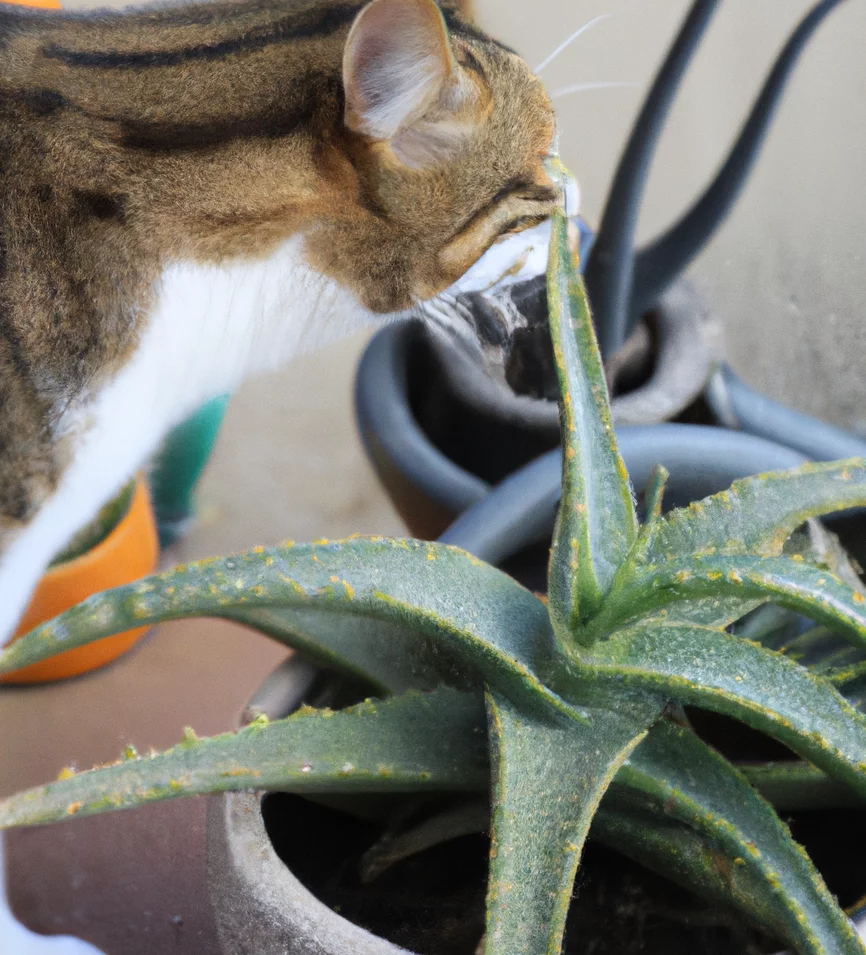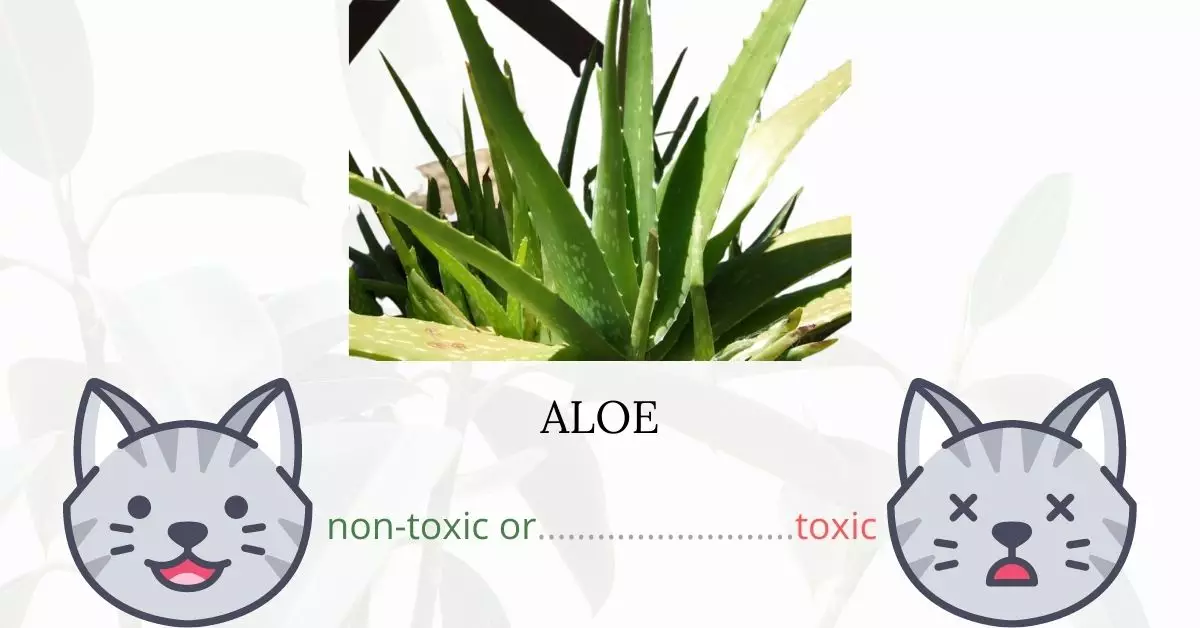Yes, aloe, scientifically known as aloe vera, is toxic to cats. When ingested, substances in the aloe plant such as anthracene, glycosides, and anthraquinones can lead to symptoms like vomiting and diarrhea in our feline friends. It’s essential for cat owners to recognize that while aloes offer medicinal benefits to humans, they can be harmful to cats and other domestic animals.
To ensure the accuracy and relevance of this article, we collaborated closely with a team of experienced DVMs (doctors of veterinary medicine). Their expertise, combined with rigorous research from high-authority websites like ASPCA and PetMD, provides readers with up-to-date information about the potential risks associated with various plants, including the Begonia, and their effects on cats.
Clinical Signs of Aloe Poisoning in Cats

Aloe vera, revered for its numerous benefits to humans, contains specific compounds that can be hazardous to cats. When a cat comes into contact with, smells, or consumes the aloe plant, these substances may trigger several clinical signs due to their toxic nature. Here’s a detailed look at these symptoms and the reasons behind their occurrence:
- Abdominal Cramping: The presence of saponins, specifically anthracene, glycosides, and anthraquinones, in aloe vera can cause an increase in mucus and water in a cat’s colon. This surge can lead to abdominal discomfort and cramping as the body tries to expel the toxic components.
- Diarrhea and Vomiting: These are direct consequences of the body’s reaction to the saponins found in aloe. As the cat’s system works to eliminate the toxins, it may result in vomiting and diarrhea as a protective response.
- Change in Urine Color: The toxins in aloe can affect the cat’s renal system, leading to a change in urine color, which typically turns red. This is indicative of possible internal damage or distress.
- Loss of Appetite: A cat’s natural instinct is to avoid food when feeling unwell. The ingestion of aloe can cause gastrointestinal distress, making the cat less inclined to eat.
- Lack of Energy: As with many cases of poisoning, the cat’s energy levels may deplete due to the body’s constant effort to combat and eliminate the toxins.
- Tremors: In rare cases, the toxic compounds in aloe can interfere with the cat’s neurological functions, leading to tremors. This is a severe symptom and requires immediate veterinary attention.
It’s paramount to monitor your cat if you believe it has come into contact with or ingested aloe, and to consult with a veterinarian at the first sign of any of these symptoms.
First Aid and Treatment of Aloe Poisoning in Cats

The symptoms of aloe poisoning in cats may be mild but it is advisable to seek medical assistance from a veterinarian. Any residue of the plant must be removed from your cat’s system, so the vet may induce your cat to vomit. After your cat has gotten rid of any plant matter in his stomach, he may be given activated charcoal to help neutralize any lingering toxins in his digestive tract. They will safely pass through your cat’s intestines once they have been neutralized.
Recovery from Aloe Poisoning in Cats
Your cat should recover fully as long as he receives prompt veterinary treatment. If he suffers organ damage, his treatment will be more difficult and will take more time. Give your cat a quiet space to rest and recover once he returns home from treatment.
Prevention
If you have aloe plant at home, make sure to place it somewhere in your house that your cat cannot access. It is even better if you could get rid of the plant and totally avoid having one at your home. Be aware if there are aloes in your neighborhood as well. Ensure safety of your cats indoors and outdoors.
What is Aloe Vera Plant?

Aloe vera or also known as Barbados aloe, true aloe, aloe, octopus plant, candelabra plant and torch plant is from the Asphodelaceae (Liliaceae) family. It is a distinguishable small, shrubby, perennial, pea green-colored plant.
Aloes are native to the Arabian Peninsula but is widely common in tropical and sub-tropical countries. Its leaves are thick and succulent with green to grey-green color, white specks on the upper and lower stem surfaces of some varieties. The leaf border is serrated and bears little white teeth. This plant’s extract is a popular ingredient in cosmetics, skin lotions, ointments, and topical drugs due its soothing effect.
If you love plants but have cats at home, check out these lists:





